Elephant Mountain trail at Spur Cross Conservation area is a difficult but very beautiful hike, especially during spring with a variety of wild desert flowers. This hike also has an archeological treasure, the remnants of a fortress built by an ancient Native American tribe, the Hohokam.
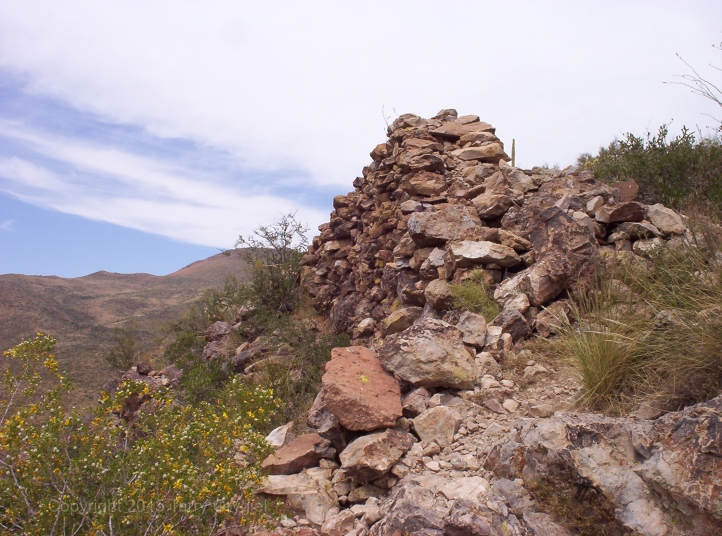
The Hohokam lived in the area between 800 A.D. and 1400 A.D. The name Hohokam came from the O’odham word “huhugam” which means “the people who disappeared.” In fact, the Hohokam left the area by the middle of the 15th century. It could possibly have happened because of a drought followed by a series of major floods, which destroyed the irrigation system built by the Hohokam on the banks of the Salt River. Others think that the Hohokam’s fields, where they grew corn, beans, and squash, were contaminated by salt after the floods. Still other archeologists think that the Hohokam left because of wars and intertribal conflicts for limited food sources. The land along Cave Creek was not suitable for farming and the Hohokam, who lived in the Cave Creek area, raided the Hohokam farmers, who lived along the Salt River. During peaceful times the Hohokam lived close to Cave Creek, but when the farmers came back to retaliate for the stolen crops, the Hohokam hid on the top of the mountain behind the fortress walls. The fortress looks almost inaccessible for attackers, especially when they were showered by deadly arrows shot by the defenders.
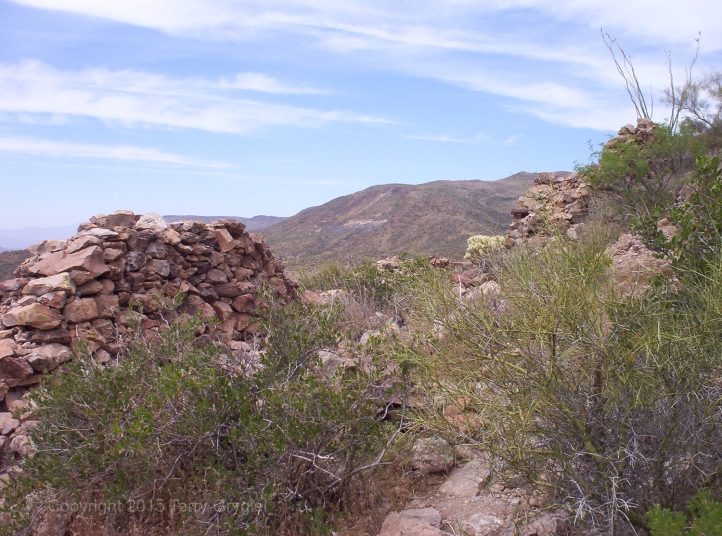
The descendants of the Hohokam, the Akimel (Pima) O’odham, Maricopa Indians, and Tohono (Papago) O’odham, who live in Arizona now, consider the area to be sacred.
There was a chain of fortresses built on the top of the mountains, which stretched from the Salt River Valley to Bradshaw Mountains, close to Prescott. During war time the Hohokam lit a warning fire and the smoke could be seen from neighboring fortresses. The smoke from the fire warned about an approaching enemy. The height of Elephant mountain, where the fortress was built, is 3,342 feet and the smoke could be seen far away. The ruins of the fortress can be seen from a trail, which passes under the fortress.
We hiked Elephant mountain trail in the fall of 2008. The hike was incredibly beautiful, rugged and an ultimate test for endurance. It was calling me back and this time there was an additional allure, all desert flowers were in bloom.
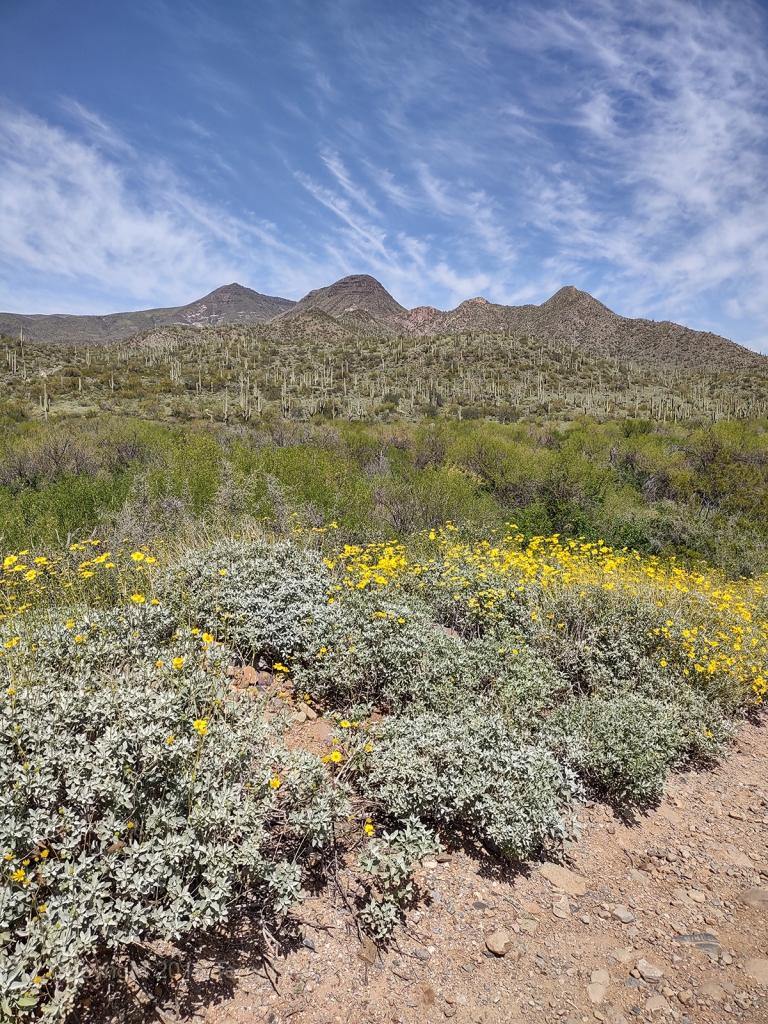
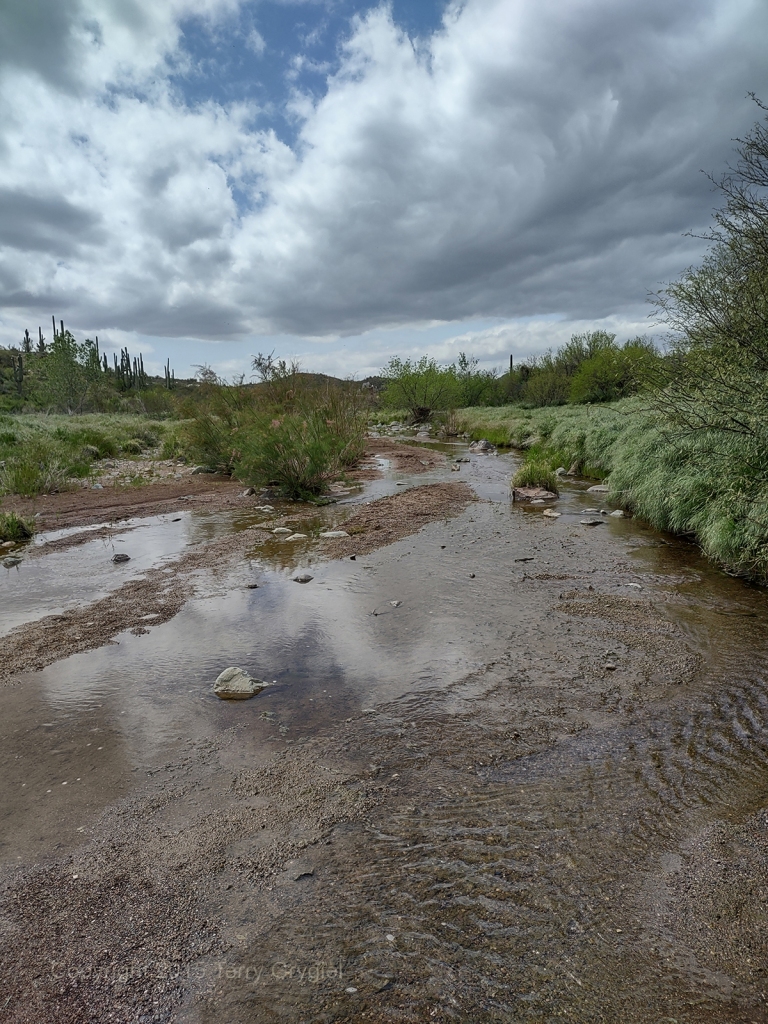
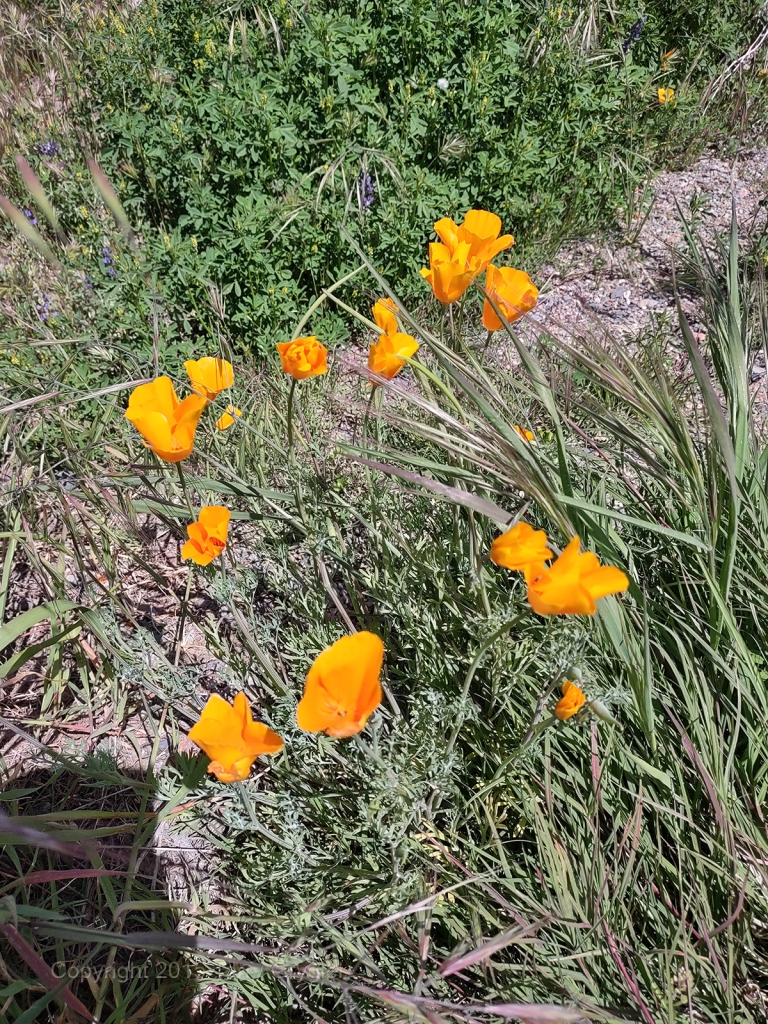
On the day of the hike the weather was sunny and light strokes of white thin clouds appeared here and there on a bright blue sky. A thick growth of yellow brittlebush flowers was at the trailhead and lined the trail for miles ahead. The fragrance of this flower is very distinct and has a calming, therapeutic effect on me. After about 10 minutes of hiking, just before crossing Cave Creek, there were a few clusters of bright yellow golden poppies. It was an unexpected surprise because they were not there a few days ago.
After the creek crossing a rich variety of desert flowers adorned the trail. There were orange desert globemallow, purple Colter lupine, tiny pink flowers of filaree, delicate lilac desert hyacinth, and lots of fluffy dark pink brushes of owl clover.
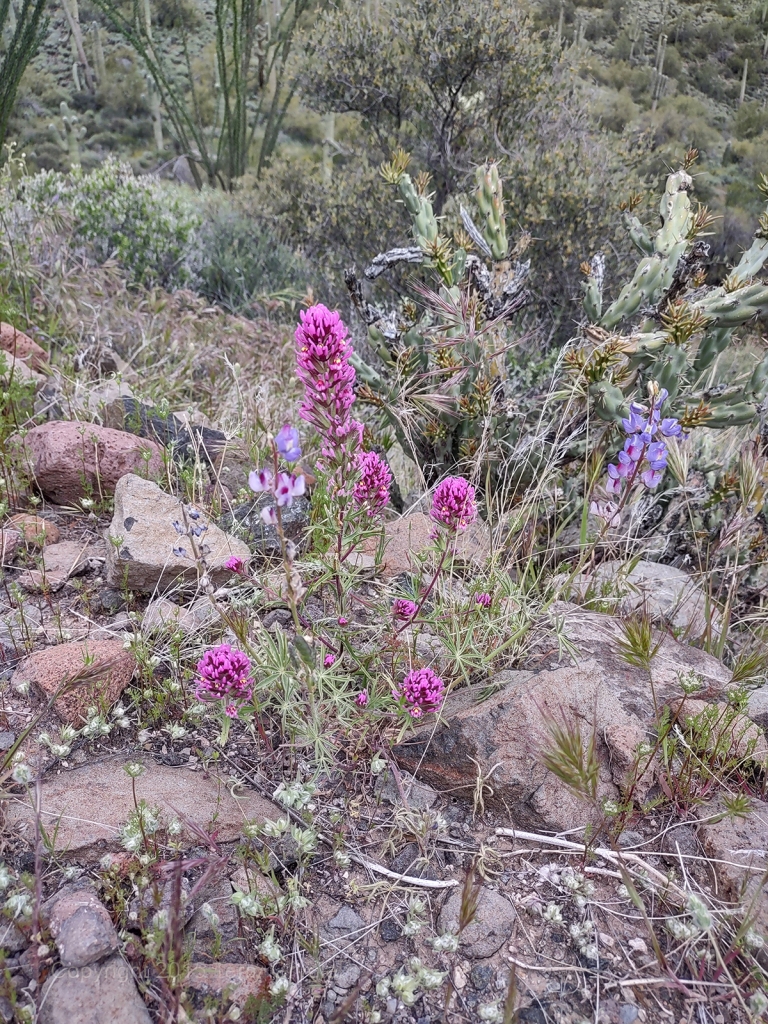
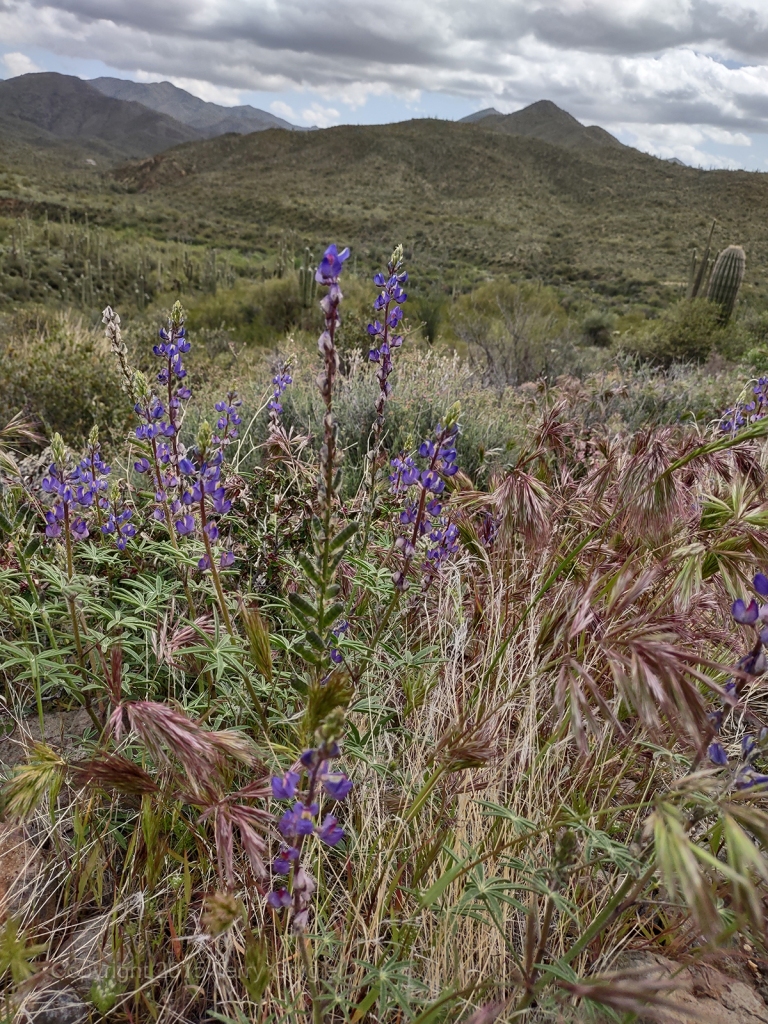
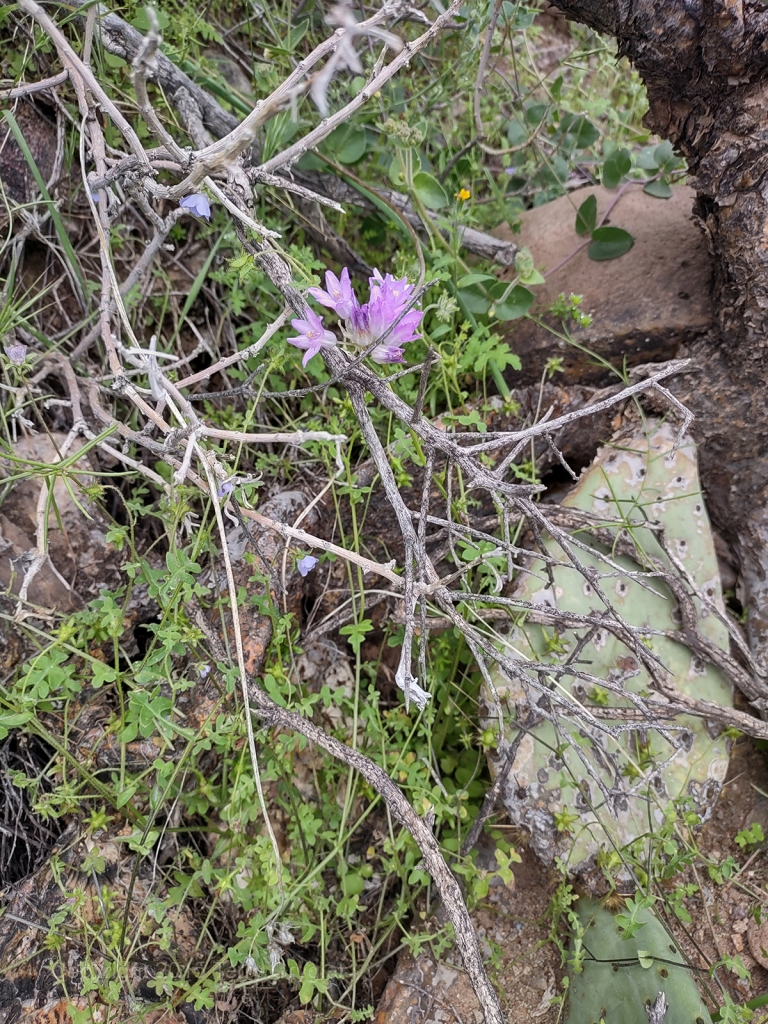
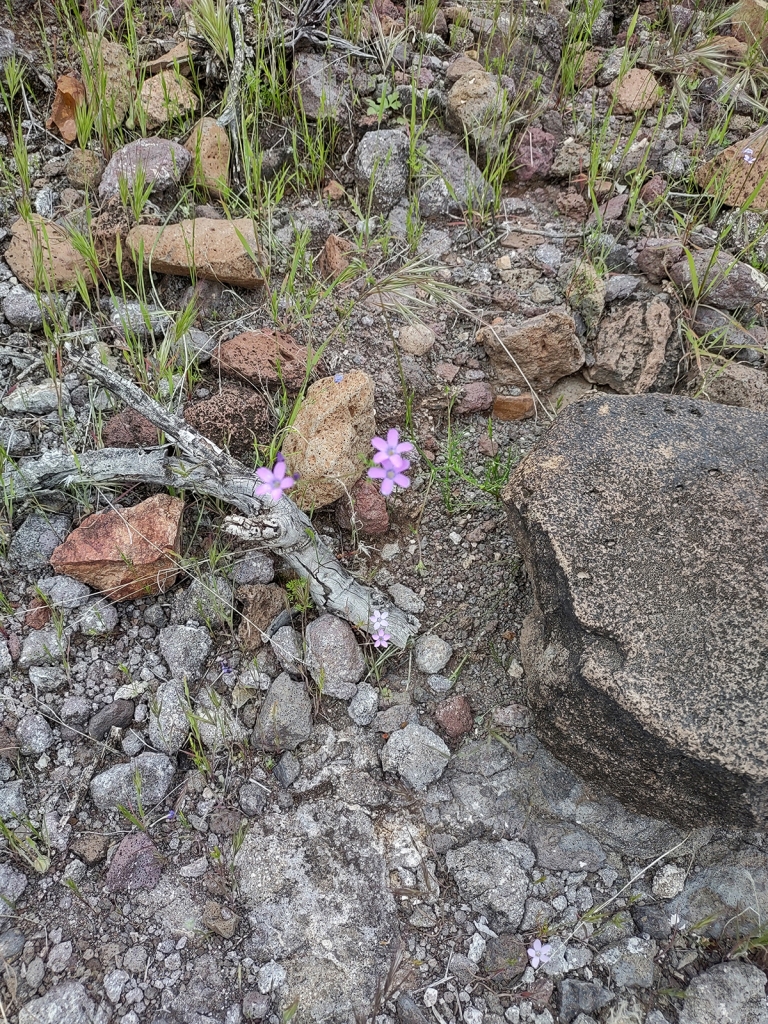
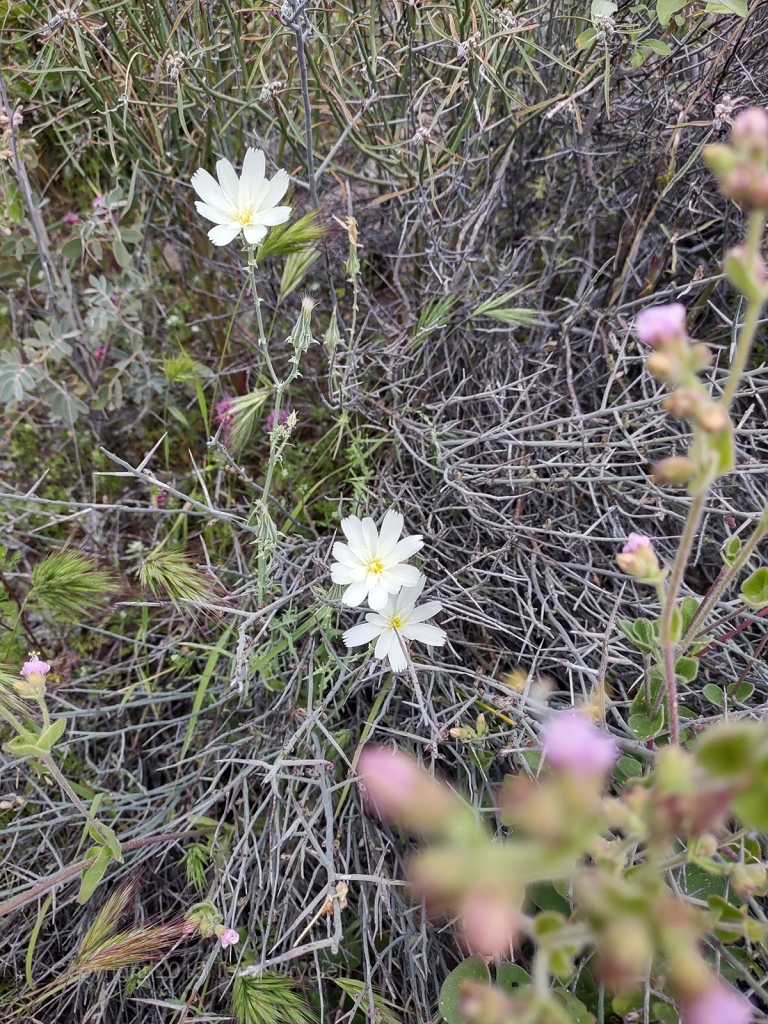
White starry desert chicory peaked out from the thick and prickly desert shrubs they like to hide in. Further on the trail, patches of tall purple lupine were surrounded by pink owl clove, white desert chicory, lilac hyacinths, and shy pink filaree.
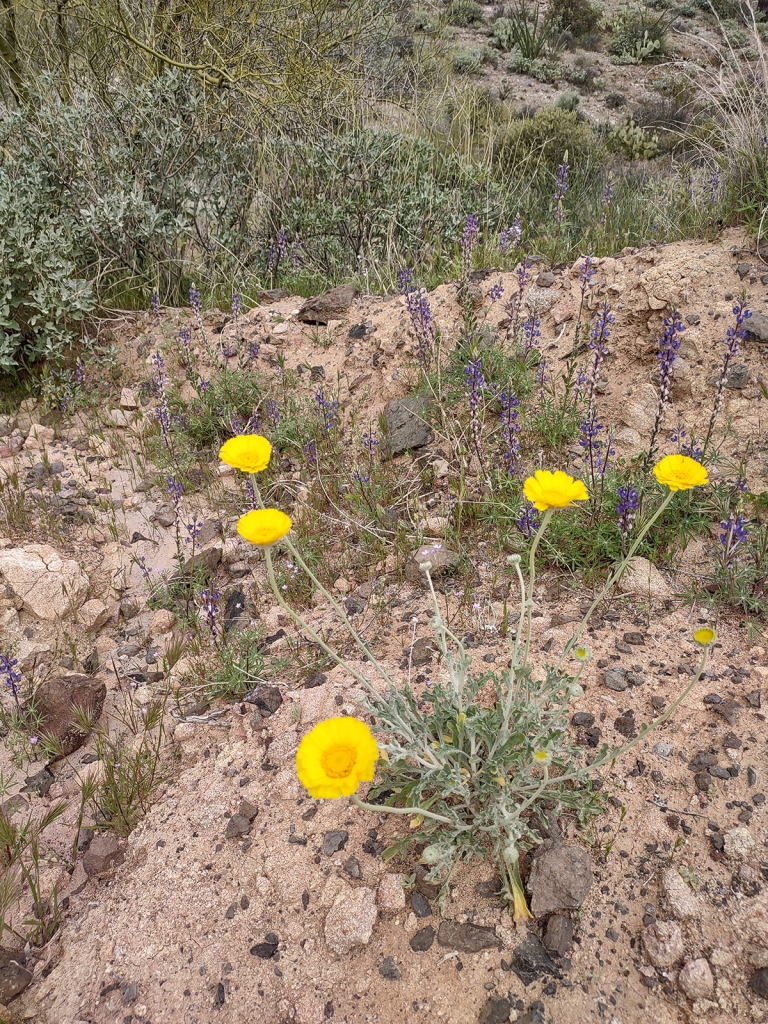
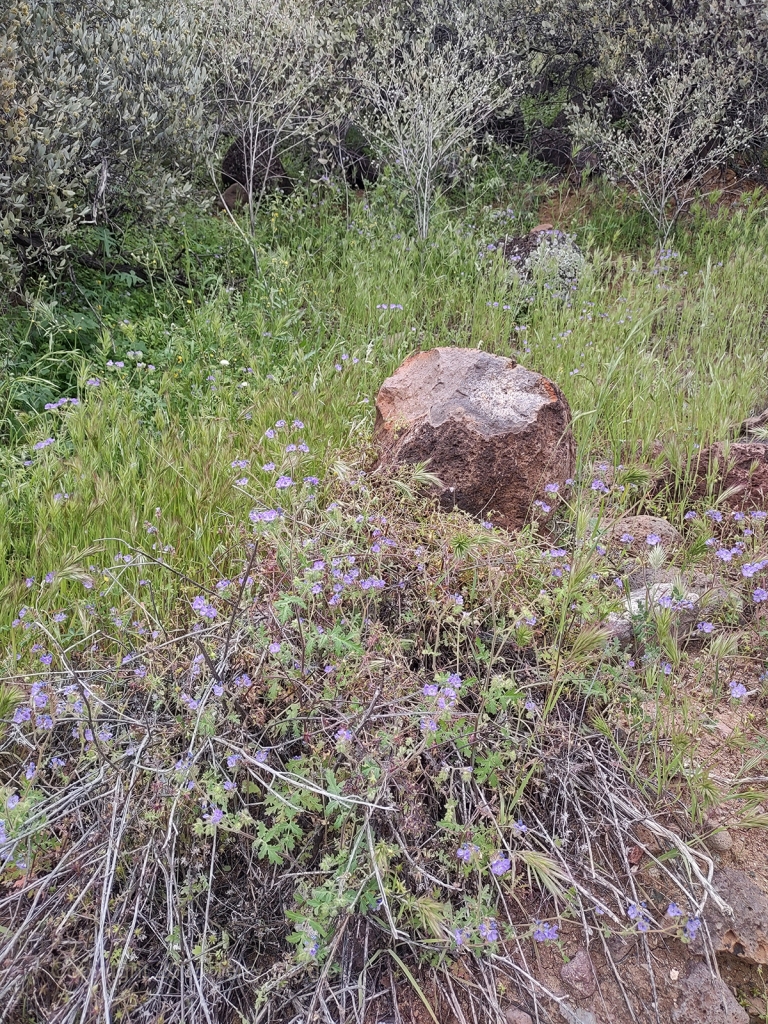
Just before the last accent on Tortuga trail, which is a part of Elephant Mountain trail, a cluster of yellow marigold stood out close to the trail. The ascending part of Tortuga was also sprinkled by lush growth of blue scorpion weed.
At the top, Tortuga trail splits: Elephant Mountain trail continues straight to the outback and Tortuga trail turns back towards the parking lot. There is a sign that shows the directions. At this point, there is a gorgeous view with Elephant Mountain in the background.
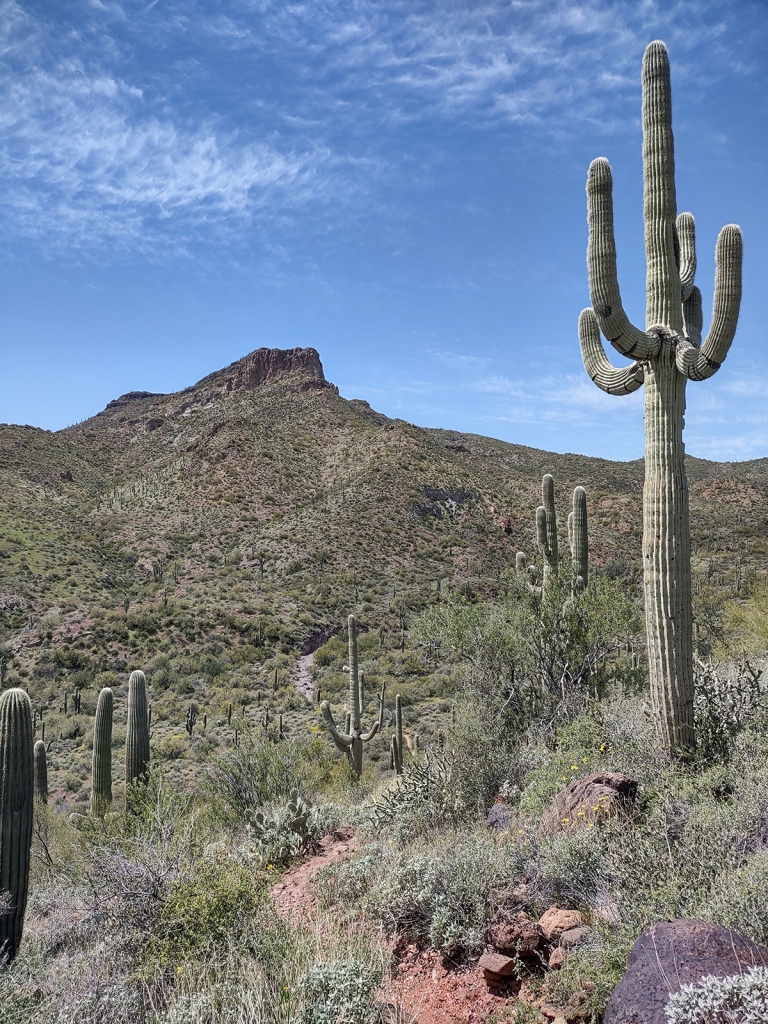
After the sign the trail to Elephant Mountain narrows. However it is well marked and meanders between tall saguaro cacti. Elephant Mountain rises ahead and looks like an inaccessible fortification. To my view the mountain doesn’t resemble an elephant. It has a steep precipice on one side, a flat top, and gently sloping opposite side.
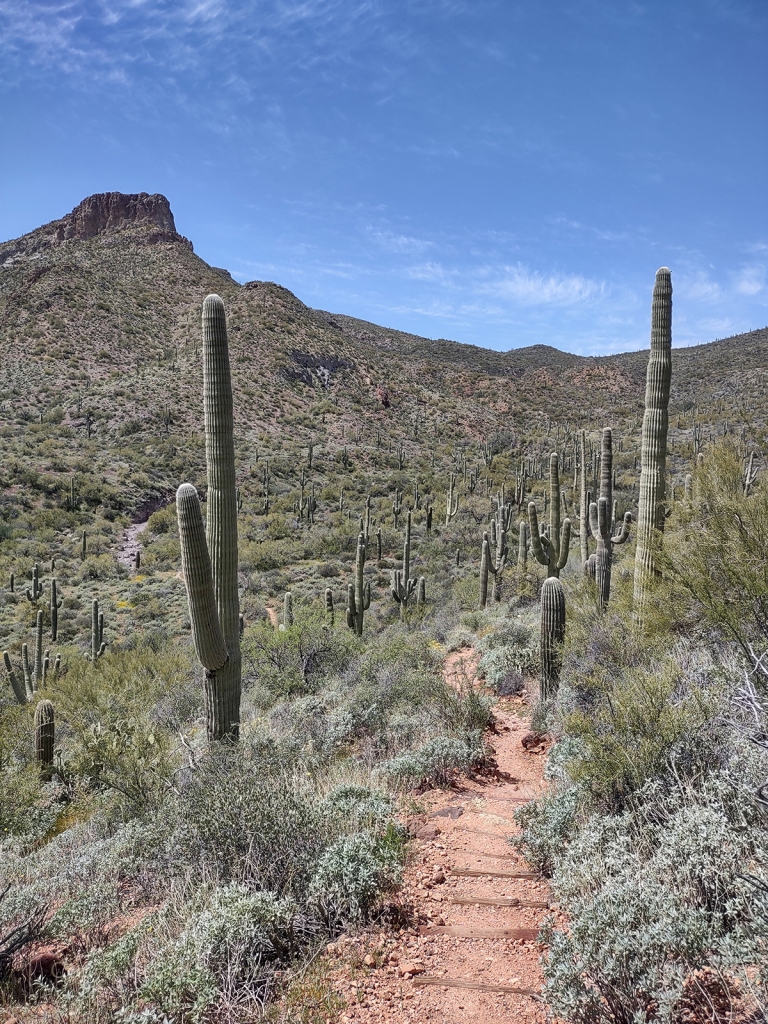
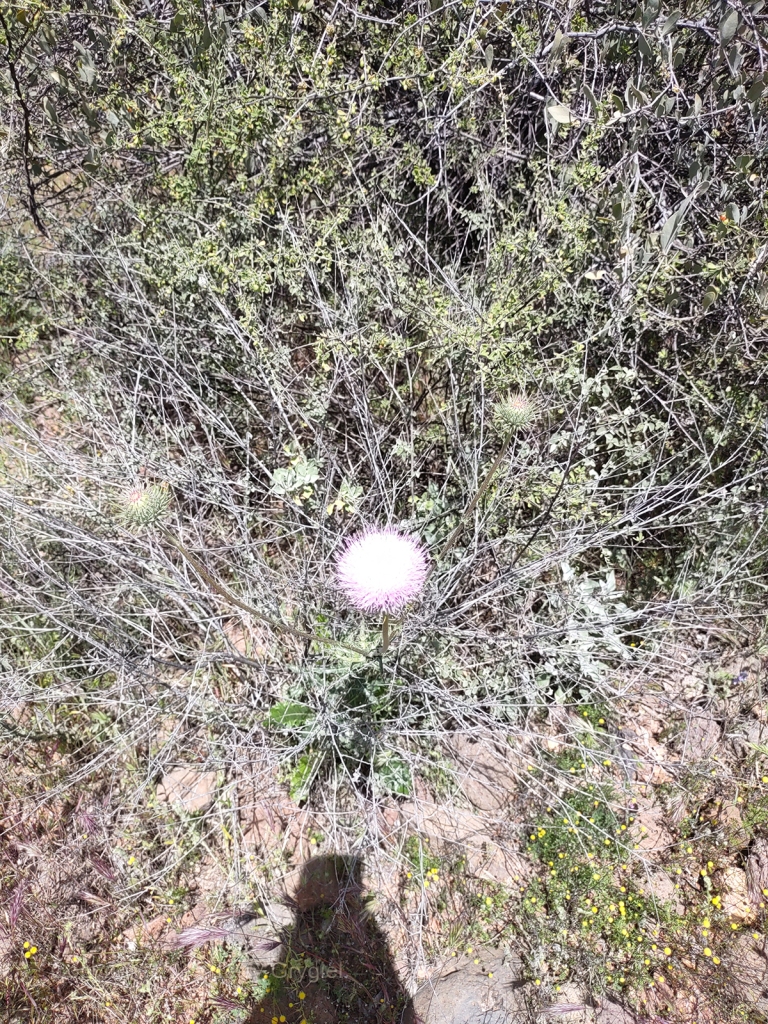
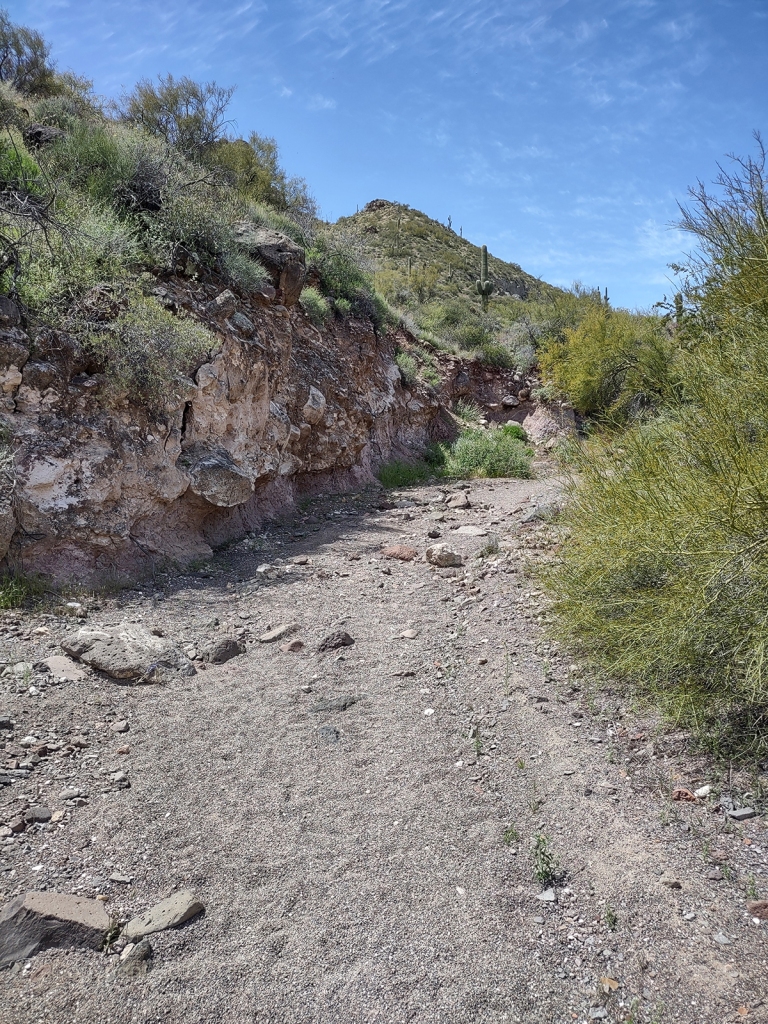
After a while the trail headed down in a series of manmade stairs into a ravine, crowded with saguaros. There were pink and fluffy Arizona thistle growing along the trail. The trail continues into an arroyo, a dry canyon, where a water stream used to flow, following its curves. The scenery looks like something in an old western movie. One could expect band of racing horseback riders suddenly appearing from behind of a curve followed by the flying bullets of their pursuers. But it was quiet, except for buzzing bees hovering over and pollinating the blooming flowers. The quiet solitude of the hike was filled with the sounds of nature. Bees were buzzing and birds were chirping and singing. So close to civilization and so utterly isolated.
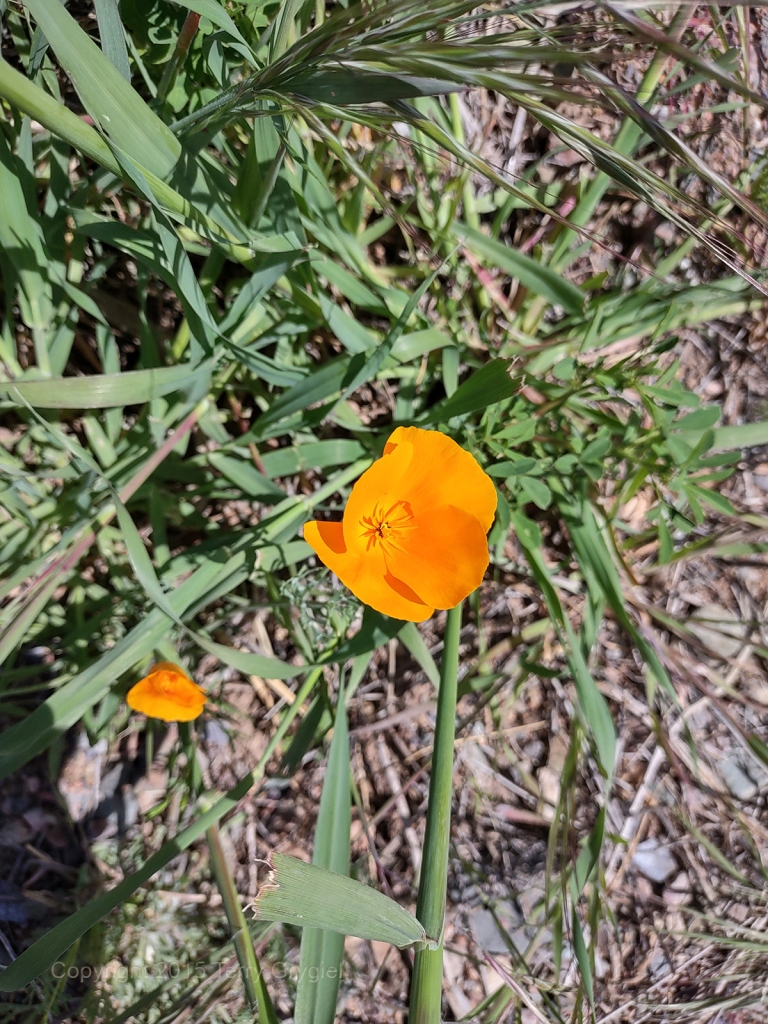
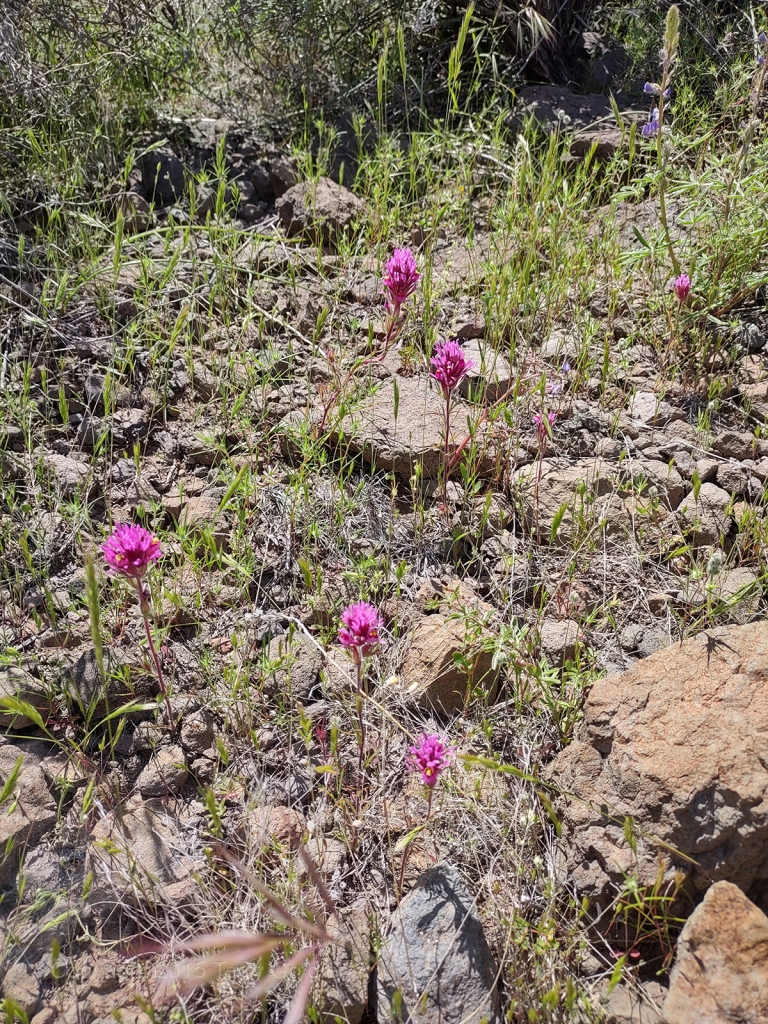
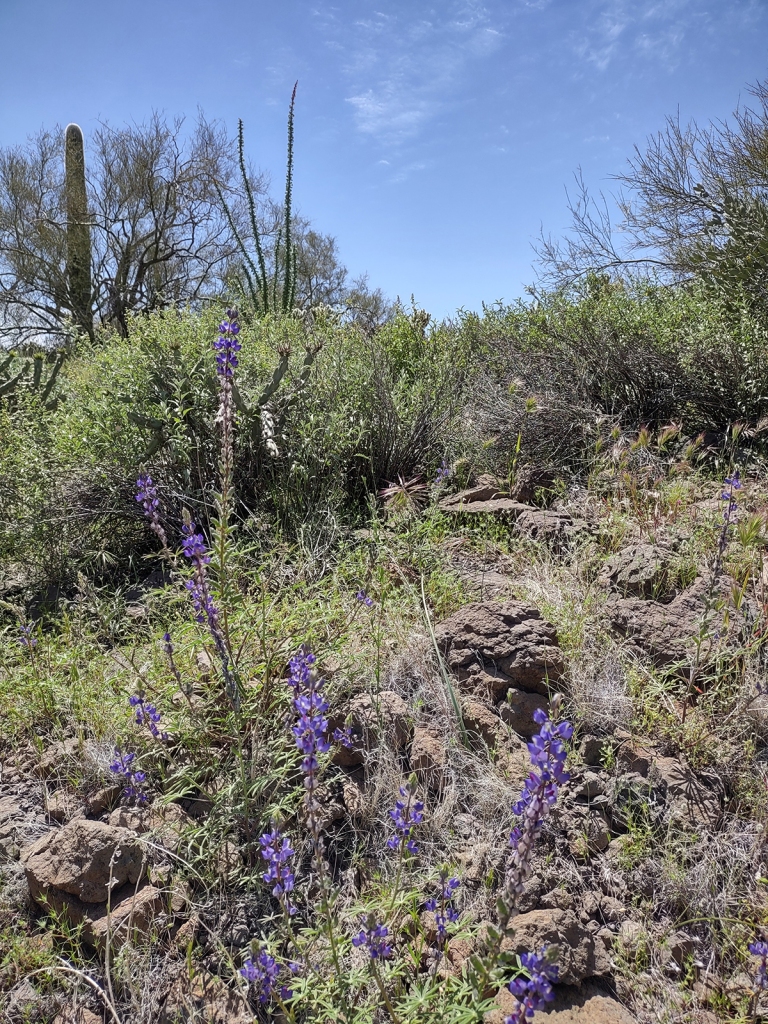
After a while the trail left the arroyo and was again surrounded by wild flowers. Flamboyant Golden poppies, graceful lupine, delicate hyacinth, bright chicory and aromatic brittlebush grew in large swaths and in different combinations along the narrow trail. The imposing rocky cliff of Elephant Mountain rose on the other side of the trail. It was one of the most remote parts of Spur Cross Conservation Area. Dark pink flowers on the top of little cacti flashed out in the green growth of desert shrubs.
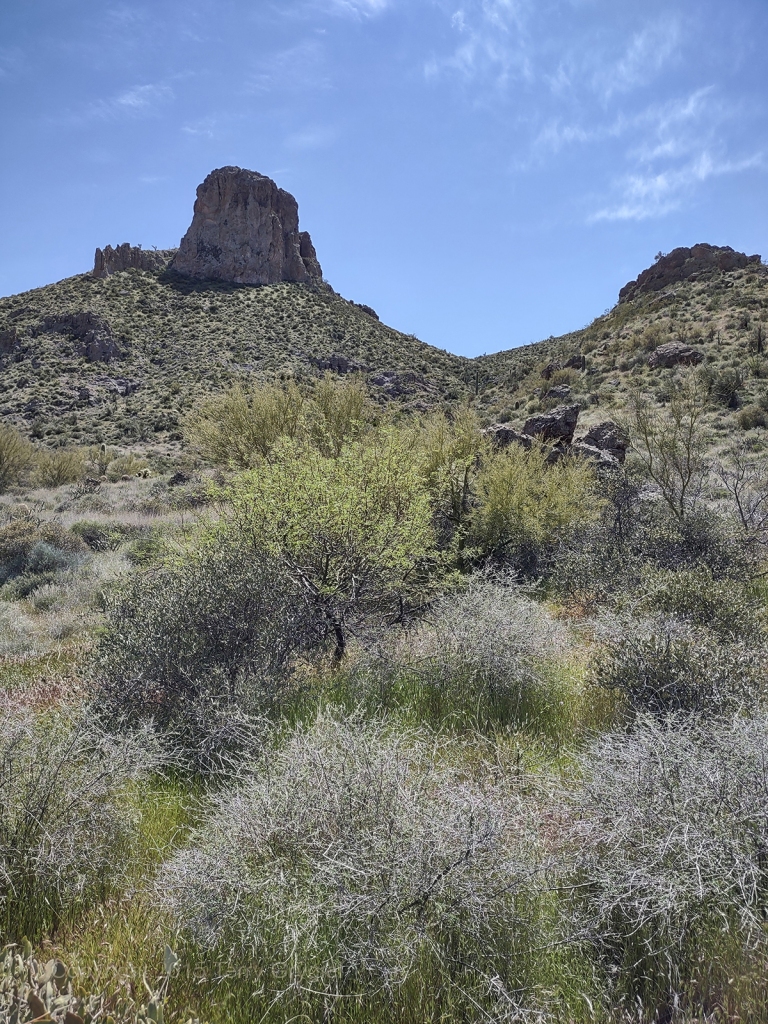
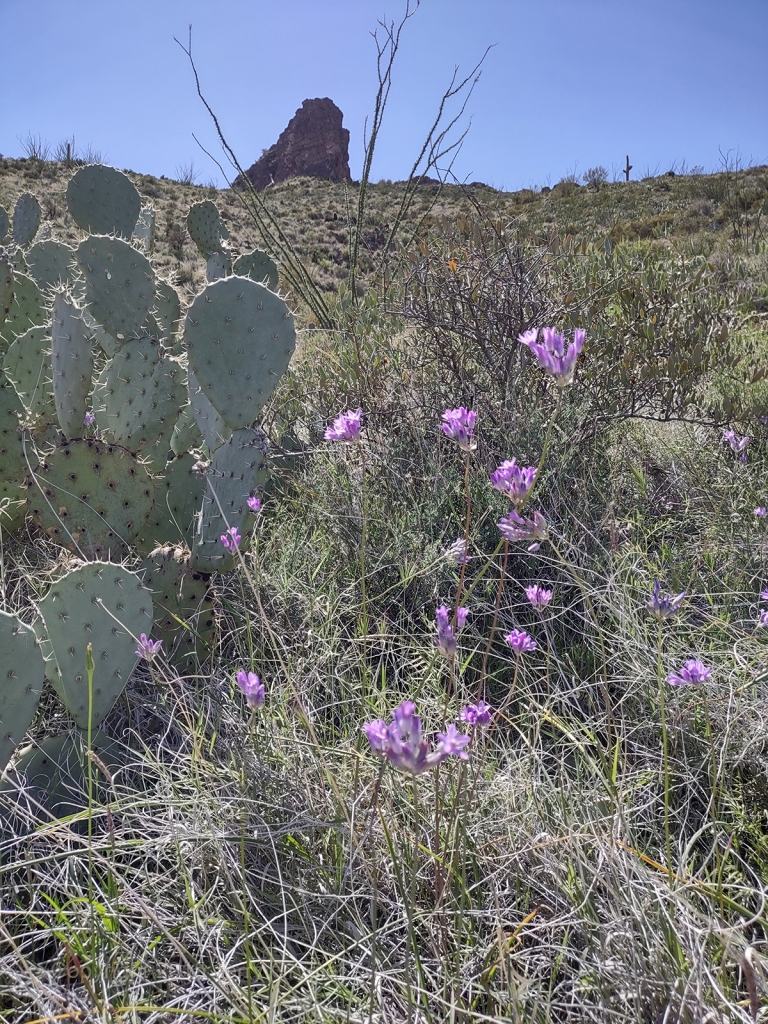
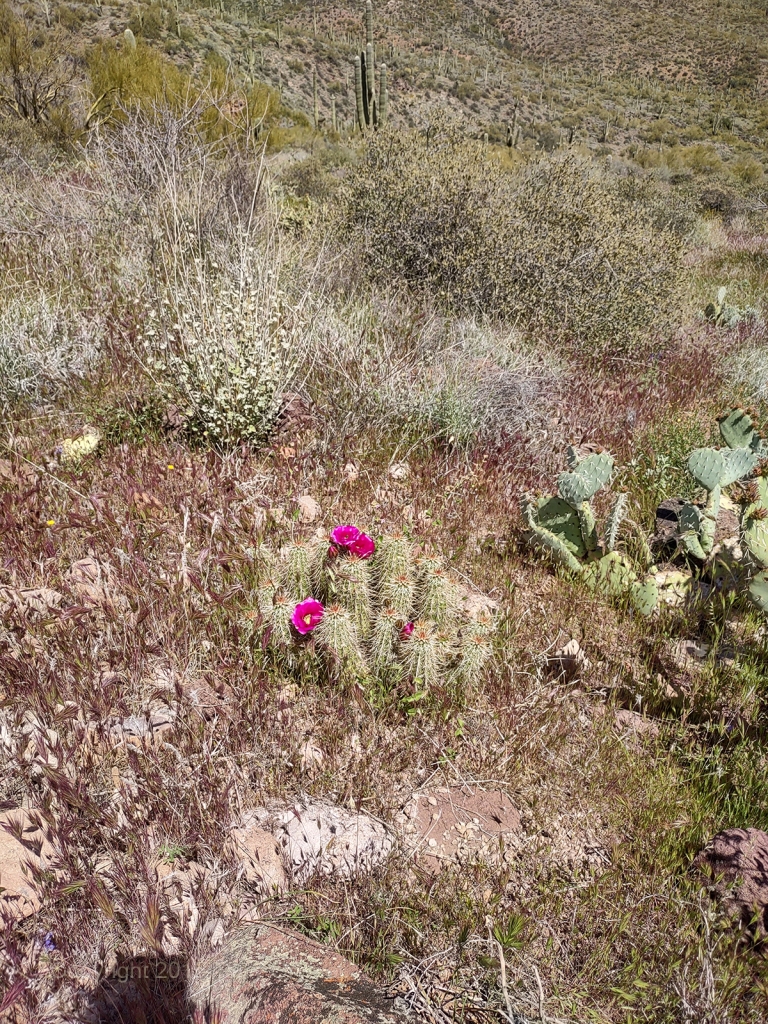
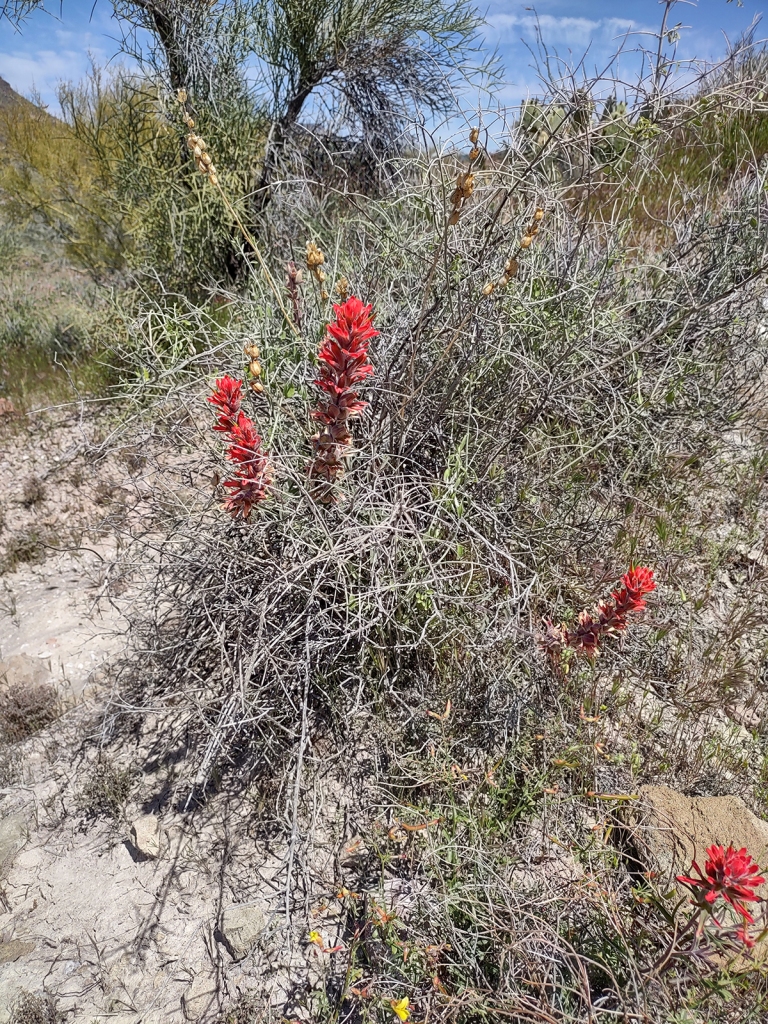
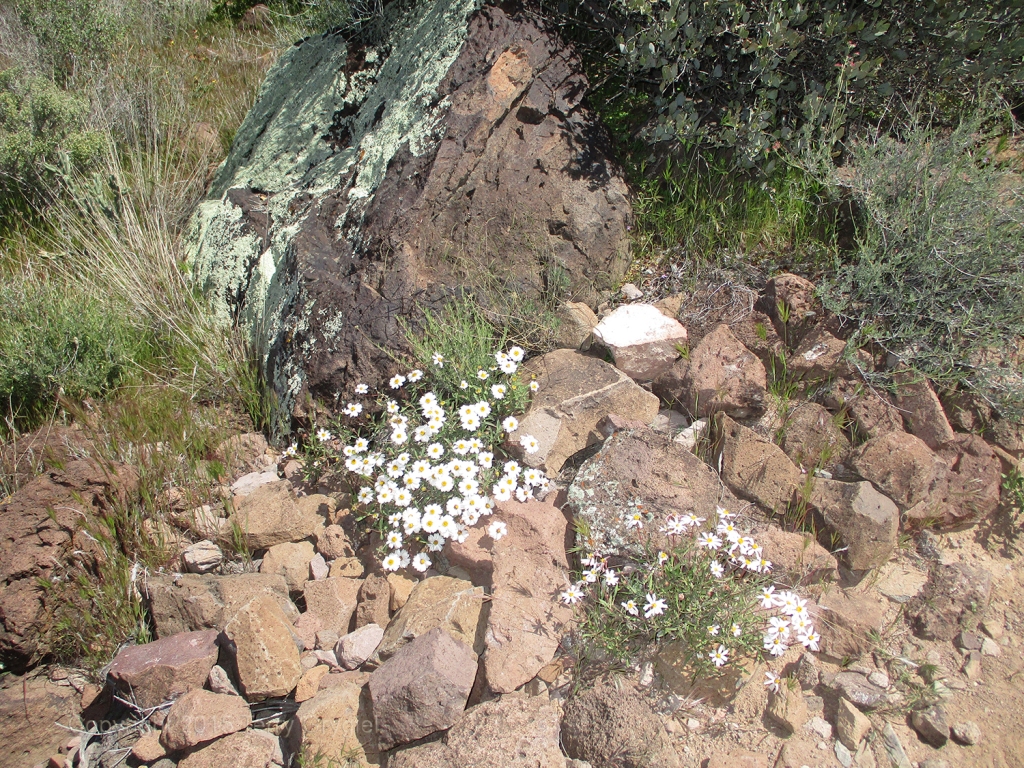
Suddenly, beautiful scarlet flowers, which I have never seen before, appeared next to the trail. It was the best kept secret and an eye candy for the hikers who hiked this challenging trail. As I found later on these flowers are called Indian Brush. Then shortly thereafter there were clusters of daisies peeking out with their yellow eyes surrounded by white petals. The trail meandered close to the wire fence, the border of the Spur Cross Conservation Area, and then turns south and gets close to the rocky cliff.
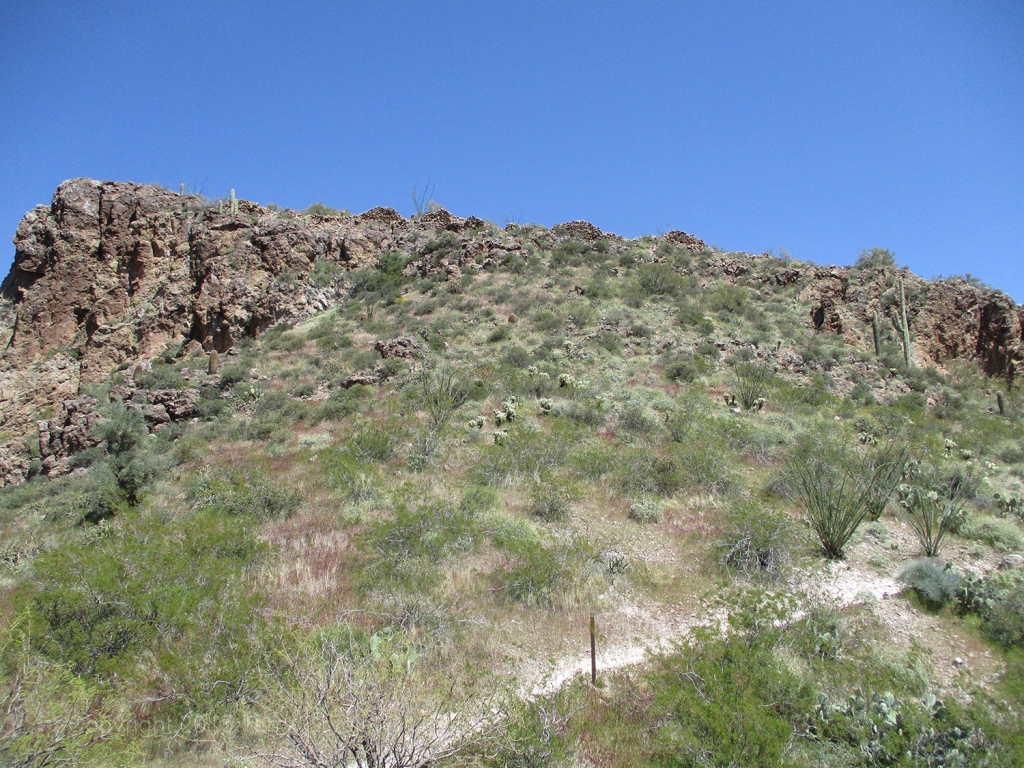
Then the ancient Indian ruins of the fortress appeared, perched on the top of the cliff. The best view of the Hohokam defensive wall is from the rocks on the opposite side of the trail. The trail passes between two mountains, forming a saddle and the wind was blowing through this saddle with force. There is a sign that said “restricted area” and there is a trail beyond this point leading up to the ruins. The last time when we hiked, I went up and looked inside the ruined fortress. The view from the top was magnificent in all directions.
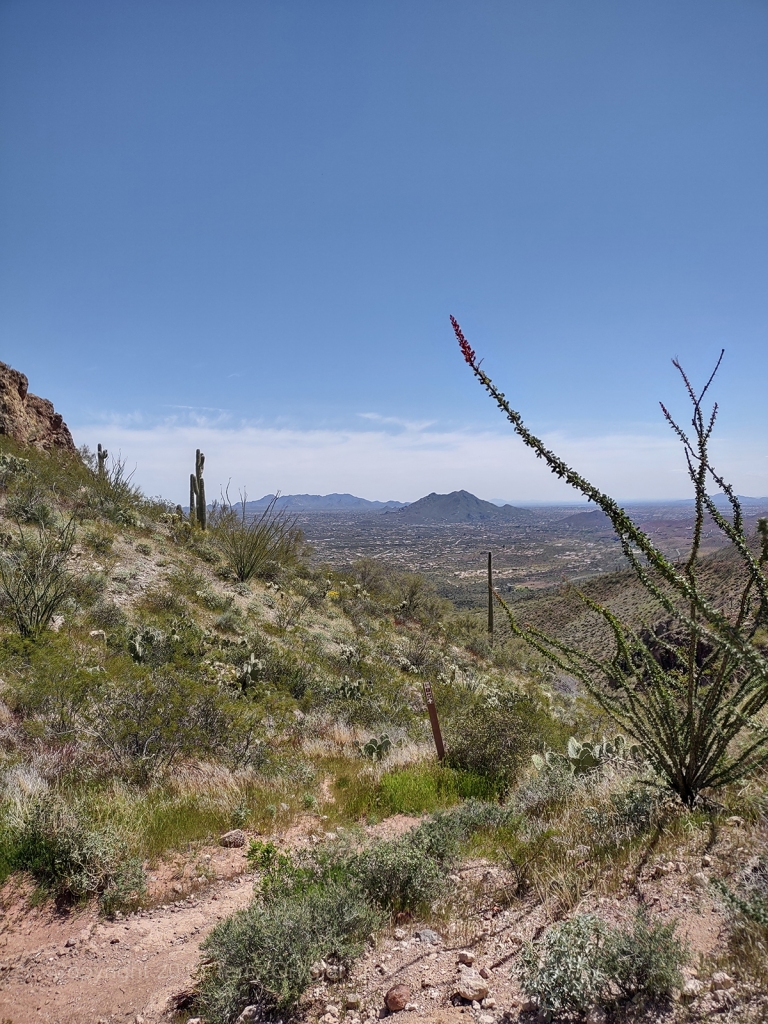
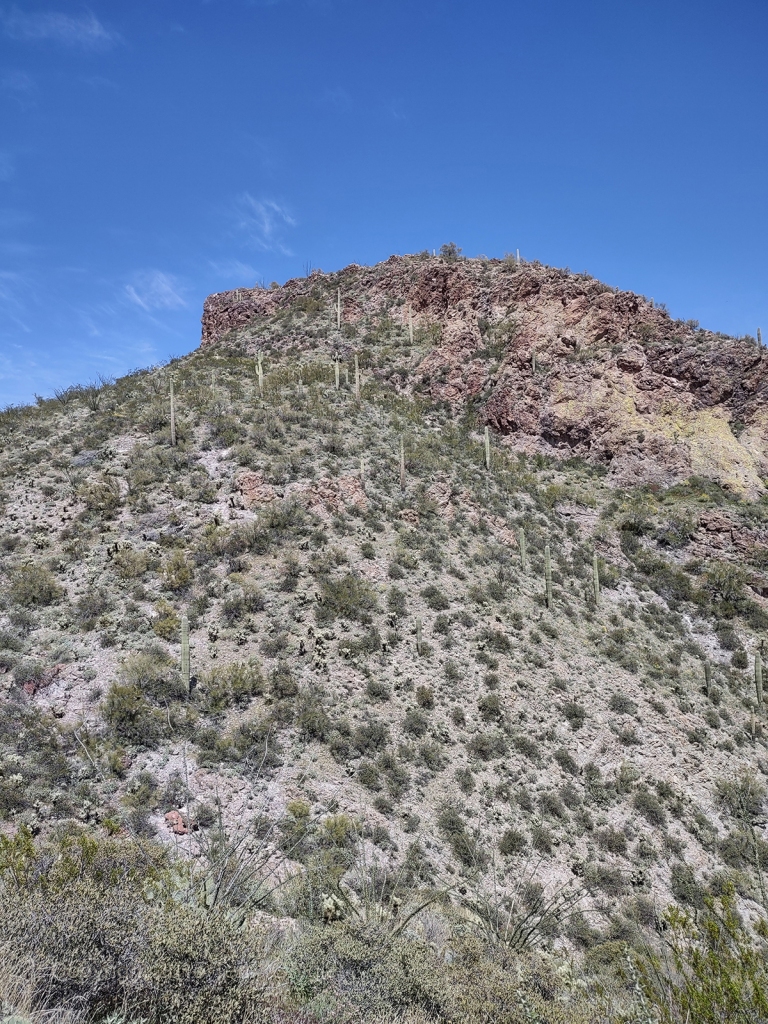
There is also a great view of the valley and residential area to the south. I took the last glance at the ancient ruins before heading back to civilization.
The trail headed mostly downhill and there were lots of golden poppies and brittlebush flowers along the trail and on the slopes. The Brittlebush were exuding tangy aroma across the desert. Part of the trail was pretty rugged. There was nobody around. There were only golden poppies, purple lupines, and orange desert globemallows swaying their heads in the wind.

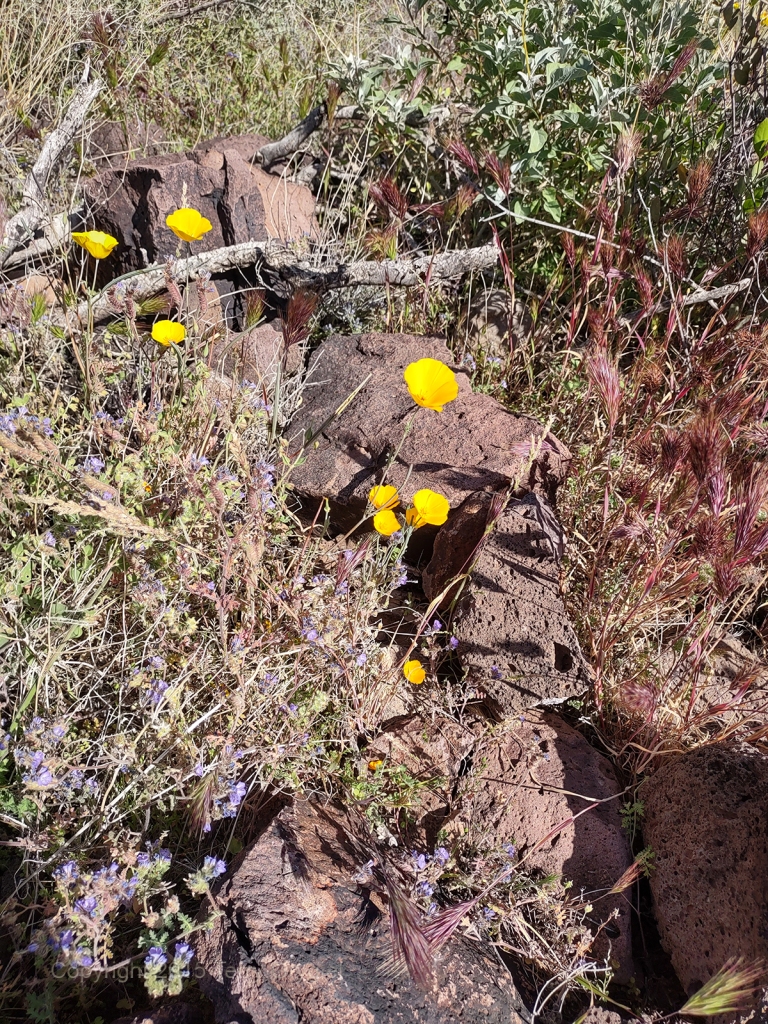
Suddenly, a moving shadow appeared on the trail. It was a hawk, slowly swooping over my head, flying low in a stream of air. The hawk was probably searching for prey to feed on. Or it was a Native American guardian spirit, symbolizing protection, courage, and strength, which followed me from the ancient ruins. The hawk broke the solitude of the hike.
There were a few benches along the trail. One of the benches was at the junction of Elephant Mountain trail and Spur Cross trail. From there it is 3.3 miles to the parking lot. Saguaro cacti stood along the trail like giant exclamation marks pointing to the sky.
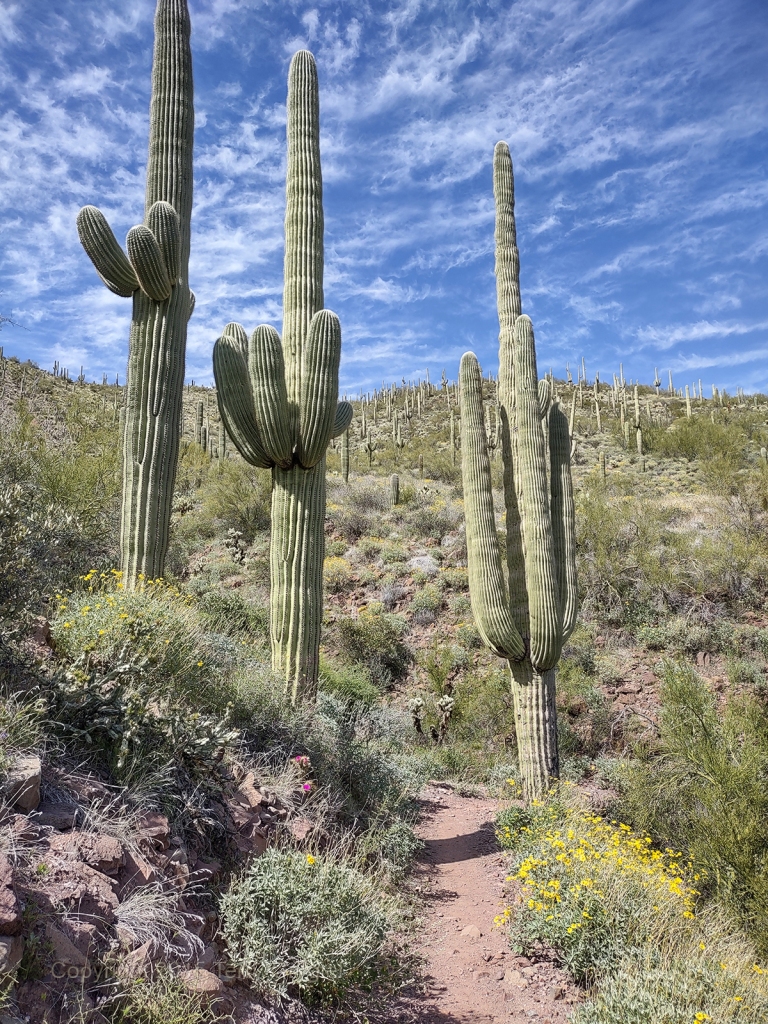
Suddenly, a fast moving creature crossed the trail ahead. The creature was so fast and quickly disappeared behind the next turn of the trail ahead of me. I pulled out my camera and walked as fast as I could to follow my new companion. I had a glimpse of my hiking companion when it quickly crossed the trail from left to right and again disappeared into the bushes. It was a roadrunner, a fast and illusive bird that can run at a speed up to 26 miles per hour. Roadrunners can also fly. It was fun to follow the roadrunner. The bird cheered me up, leading the way to the trailhead for a while. Closer to the junction of Spur Cross and Dragonfly trails more hikers appeared going the opposite direction. The last 0.3 miles were the most difficult.
Elephant Mountain trail is 6.8 miles long and is rated as very difficult. It was a challenge and a test for endurance but it was fun and exciting experience.
Happy hiking everybody!